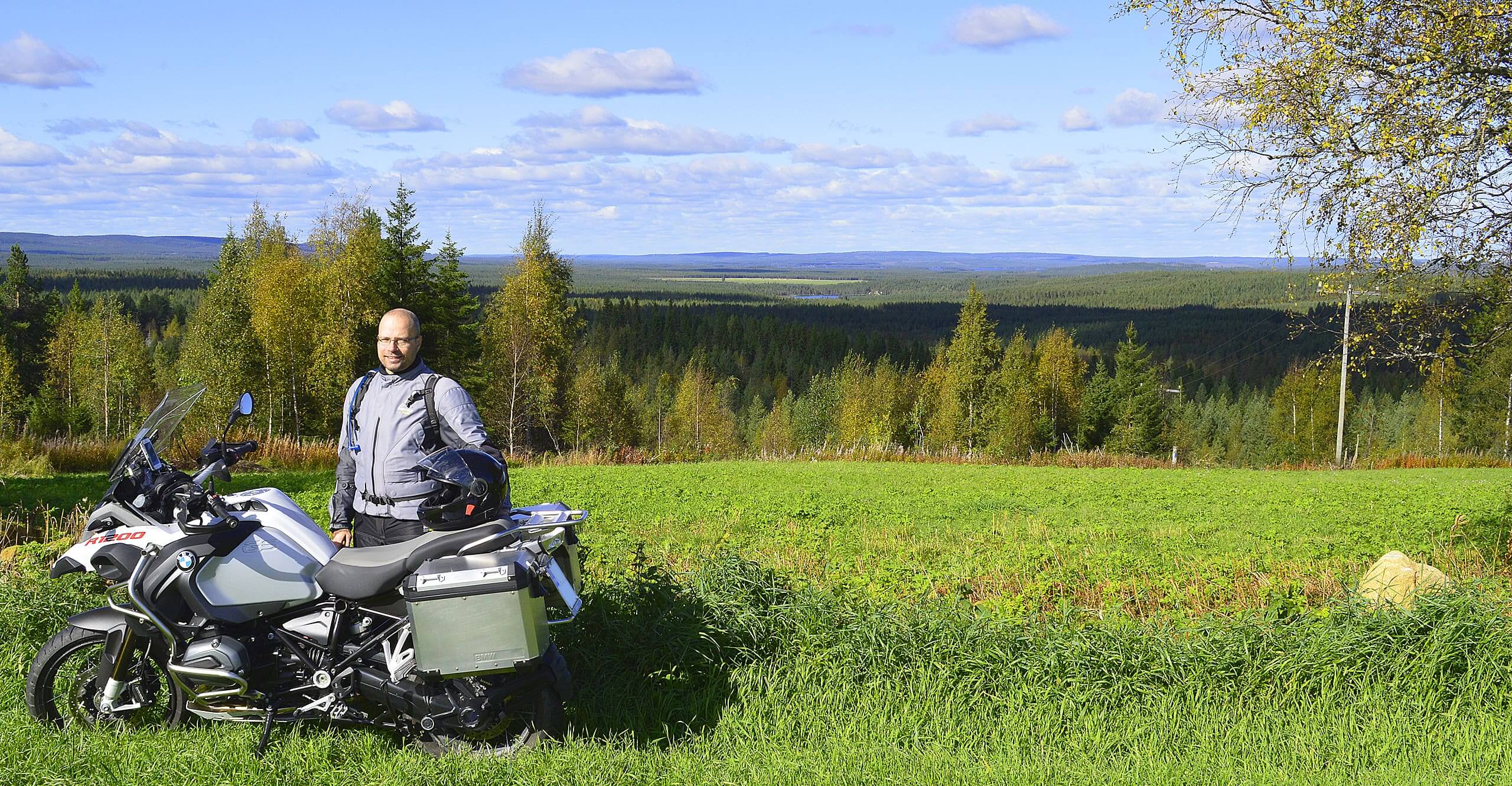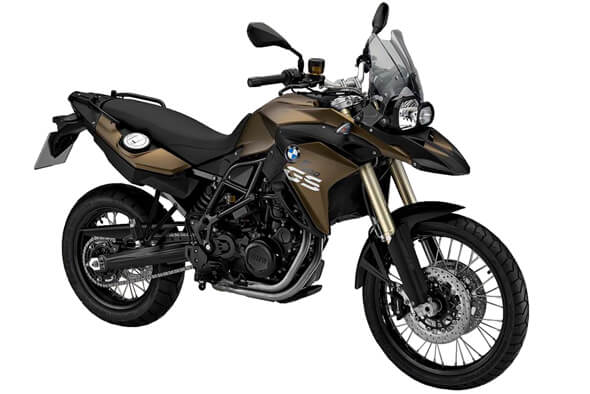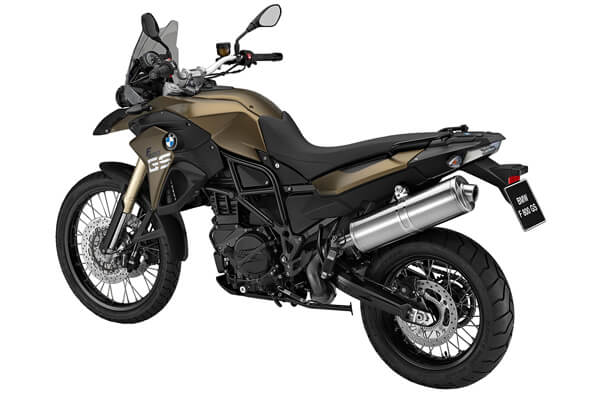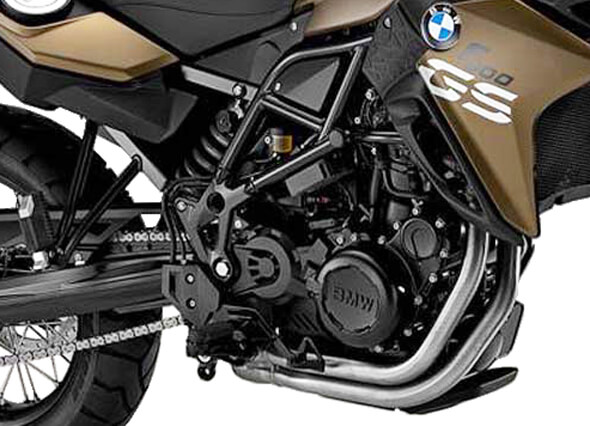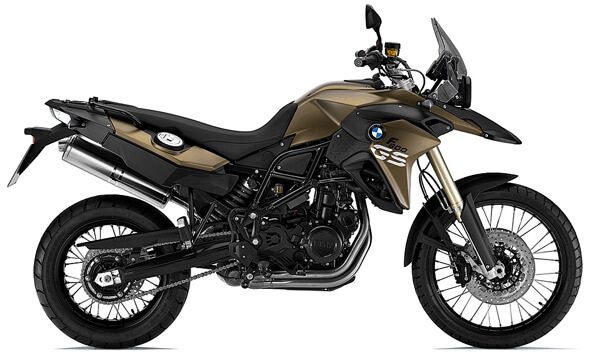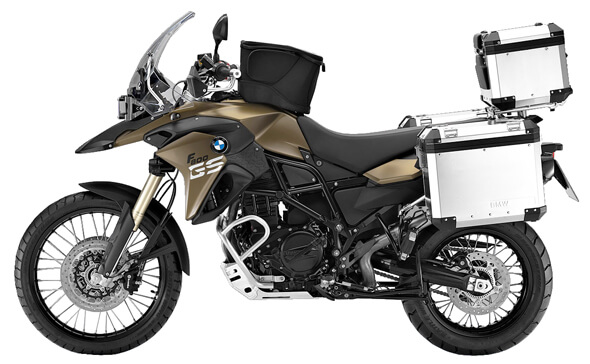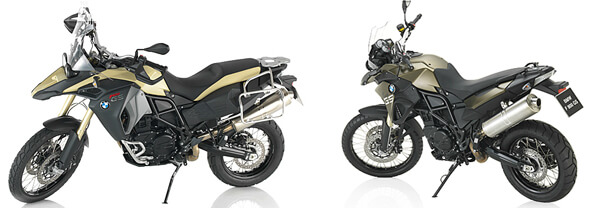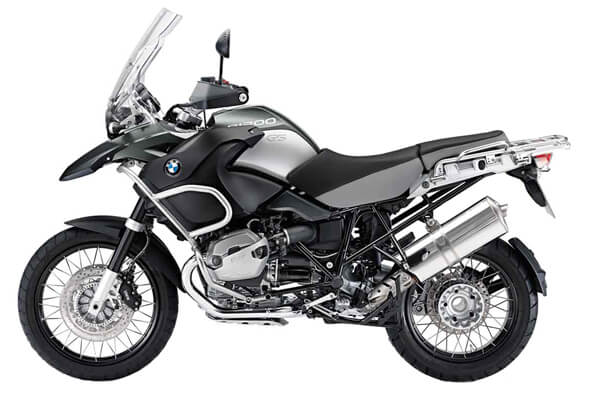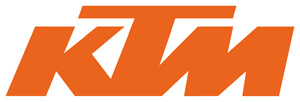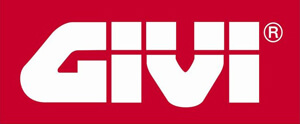BMW F800GS 2013 Allroad Touring Enduro
BMW F800GS 2013 is an interesting choice in the medium size allroad touring enduro segment. The BMW factory updated the 800GS already for 2012 and now there is on top also an adventure version, BMW F800GS Adventure 2013. The 800GS is designed for easy everyday motorcycling, solo riders and allroad touring with reasonable refueling distances. The bike is kept very simple and open for versatile requirements which allows to leave e.g. the latest rider support systems out. That is interesting from the offroad touring point of view. The BMW F800GS 2013 is an agile and light weight allroad enduro which makes a lot sense and leaves room for personal preferences, but also tuning.
What makes the BMW F800GS 2013 so strong and competitive touring enduro? Clear advantages are a relative lightness, a wide handlebar, cross spoked rims and a big 21inch front wheel as standard. Such features are very relevant in offroad conditions and on loose surfaces. The 800GS is a comfortable and very dynamic motorcycle which is easy to ride also on gravel and dirt roads. The agility comes from the rear end fuel tank which eliminates the top heavy handling features with a traditional fuel tank. Still the BMW F800GS 2013 is not perfect every way, but becomes an interesting choice for those who enjoy tuning and prefer to choose their own parts instead of taking the OEM. The equipment manufactures keep close eye on the BMW F800GS 2013 and there are a lot of accessories to choose from.
The BMW F800GS 2013 has few things to improve. Such as the windscreen which is very short and provides no real coverage against the elements. Proper hand guards would complete a taller touring windshield. The street type foot pegs are too small, narrow and equipped with a rubber pad which makes the foot pegs slippery when wet and muddy. Proper offroad foot rests offer much better support and grip. Small foot pegs simply do not give enough support when riding in standing posture. The standard BMW F800GS 2013 rear fuel tank is quite small for touring purposes, especially with a touring load when the consumption tends to rise. By attaching two reserve canisters such as ROTOPAX in front of the side panniers, the refueling range could be extended to a somewhat reasonable distance. Fortunately the payload capacity allows this, but still I would not come too close to the technical limits. The BMW F800GS 2013 would become surprisingly rear heavy from the handling point of view and the front tyre may become too light which is dangerous in offroad conditions.
I think that the BMW F800GS 2013 offers a good platform to build up a unique allroad touring enduro that is not too heavy for challenging routes. The 800GS is not designed for extreme offroad riding on bad and challenging trails. That would require much lighter bike and even more agility. The 800GS is not a wild riding machine on tarmac either, but as soon as the BMW F800GS rider leaves the urban and heads on gravel and dirt roads, the GS shows how dynamic and agile it really is. The key BMW F800GS 2013 features are:
- Seat height 880 mm.
- Cross spoked rims
- Tyres 90/90 – 21 and rear 150/70 – 17
- Engine type parallel twin cylinder
- Max performance 85HP and 83Nm. or 61.2ft-lb.
- Alternator 400W
- Electronic immobiliser system EWS
- Chain driven
- ABS (off switchable)
- Weight fueled 214kgs or 471.8lbs.
- Payload 229kgs or 504.9lbs.
- Fuel tank 16L, 4.2USgal., 3.5UKgal. (min. 95RON – 89AKI)
BMW F800GS 2013 Instrumentation
Even the standard instrumentation of the BMW F800GS 2013 is sufficient for touring as long as there is at least a good GPS navigator to assist. On top of the analogue speed and rev gauges, there is a digital multifunction LCD display, but without taking the onboard computer, it provides only the basics. In touring purposes the fuel reserve counter becomes useful with the oddly shaped rear end fuel tank. The basic BMW F800GS 2013 onboard computer and multifunction LCD display provides the following information:
- Time
- Fuel level indicator after 1/2 tank
- Coolant temperature level
- Odometer
- Trip 1 & 2
- Service due indicator
I recommend to choose the advanced BMW F800GS 2013 onboard computer due to the extra convenience. The gear indicator is sometimes useful when approaching the red traffic lights and not braking with the engine. Now the rider is slightly behind the proper gear to continue if the lights suddenly change and the rider has not counted gears in mind. The temperature indicator is also a practical help when estimating the proper amount of riding apparel early enough. The extended BMW F800GS 2013 LCD features provide additionally:
- Gear in use
- Air temperature
- ICE warning
- Average speed
- Average fuel consumption
- Current fuel consumption
- Fuel reserve counter
- Grip heater adjustment (optional)
- Speed limit warning
BMW F800GS 2013 Engine
The BMW F800GS 2013 water cooled twin cylinder engine delivers 85HP and 83Nm torque which is quite enough for solo touring with a reasonable amount of payload. The power of the 800cc twin cylinder is very practical, but when riding on two close to the maximum load, it`s simply not much. The BMW F800GS 2013 is not ride by wire throttled which means that there is no cruise control. As long as riding is active from nature, no-one is missing the cruise control, but the most of us also ride on tarmac and use the bike in everyday life. Therefore I feel that the cruise control should be a standard feature for any touring capable motorcycle. Although the medium size motorcycles are rarely equipped with the cruise control.
The BMW F800GS 2013 engine is partially covered with a small skidplate as standard, but that is only a visual thing. Those who are going to take the 800GS on gravel and dirt roads, even offroad, should absolutely invest in a proper skidplate and an engine guard. A proper skidplate protects also the oil filter in front of the engine from the gravel spray when riding on dirt and gravel roads. In this case the skidplate has to protect also the exhaust pipes below the engine. A proper engine guard minimizes the threads against the cooler, when small accidents happen. The BMW F800GS 2013 engine requires at least regular 95 octane fuel, but the factory offers optionally also 91RON settings as extra. I am sure that most of us are not missing it at all, but I think that this should be a standard feature for allroad capable motorcycles such as the BMW F800GS 2013. I can`t imagine that it would be too expensive and for example the TRIUMPH Tiger 800XC 2013 has it as std.
BMW F800GS 2013 Fuel Tank
The BMW F800GS 2013 fuel tank is clearly very small for allroad touring and long LEGs. Perhaps changing the standard rear tank to the BMW F800GS Adventure 2013 fuel tank would be possible. That would be an interesting alternative, although the Adventure rear end frame is reinforced and may be slightly different. Regardless anyone can take two reserve canisters such as ROTOPAX and attach them in front of the panniers to extend the range. Anyhow the refuelling range should be well above 500km / 310 miles to be at the safe side. Fuel stations can be rare in the backcountry and changes in the network sometimes sudden. Note that the factory fuel consumption may change quite a bit with the real touring weight and conditions.
Along with the BMW F800GS 2013 rear end fuel tank one disadvantage surfaces. The weight distribution which is slightly less ideal because most of the payload is anyhow placed at the back and less weight is placed closer to the center of gravity. Now the load at the back puts more pressure on the rear wheel making the front wheel and steering a little bit lighter. This phenomena is typical for all small and medium size touring enduros, but especially with the 800GS. Note that having the two reserve canisters on board the passenger would have even less space for the feet and luggage than otherwise. Therefore I would not choose the BMW F800GS 2013 for riding on two with a heavy touring load and head to challenging surfaces and conditions. I would rather take two bikes.
BMW F800GS 2013 Equipment Accessory
For touring purposes the standard BMW F800GS 2013 is not quite enough. There are few basic accessories that would be good to add for allroad touring. I would recommend to choose aluminium side panniers, the center stand, a touring windscreen, a good engine skid plate and an engine guard for the BMW F800GS 2013. A pair of good auxiliary LED lights would be also a practical safety measure and bring proper illumination performance in the darkness. Note that the 800GS alternator produces a moderate 400W which is not a lot for touring purposes and installing energy hungry halogens would be a bad idea.
I think that adding stability ASC or suspension ESA control systems to the BMW F800GS 2013, would be quite unnecessary. The twin engine itself is already very resilient and learning to control the power in question, is not that hard. The bike is designed mostly for solo riding which narrows down the real need to change suspension settings either. Therefore I would use the money for the basic touring accessories. The BMW F800GS 2013 can be adjusted also for shorter riders which makes the 800GS even more interesting for a larger group of riders. It can be done by changing the seat, lowering the suspension, using handlebar and foot peg adjustments. There are several seat alternatives both at the dealers and the equipment producers. The lowest OE -seat translates to 820 mm. or 32.3in. seat height which is already quite low and very interesting for a lot of riders.
BMW F800GS 2013 Comparison
Compared to the brother model BMW F800GS Adventure 2013, the basic BMW F800GS 2013 has 8L (2.1USgal., 1.8UKgal.) smaller fuel tank, no side pannier rack, nor reinforced rear subframe to support the maximum touring load (443kgs), really small windscreen, basic seat, narrow foot pegs, no adjustable foot brake lever, no engine guard, but it has also around 15kgs (33.1lbs.) less weight. Compared to the big brother BMW R1200GS Adventure 2013, the little brother is 34kgs lighter, allows 13kgs more payload, but provides 25HP and 37Nm less force. Although the difference is bigger in practice when not throttling the highest REVs (approx. 60HP / 50Nm). Note that the payload includes the rider and possible passenger with the full riding equipment. The alternator is also 320W smaller which is not good news for touring. The big brother permits 32kgs more total weight and is therefore clearly designed for two.
